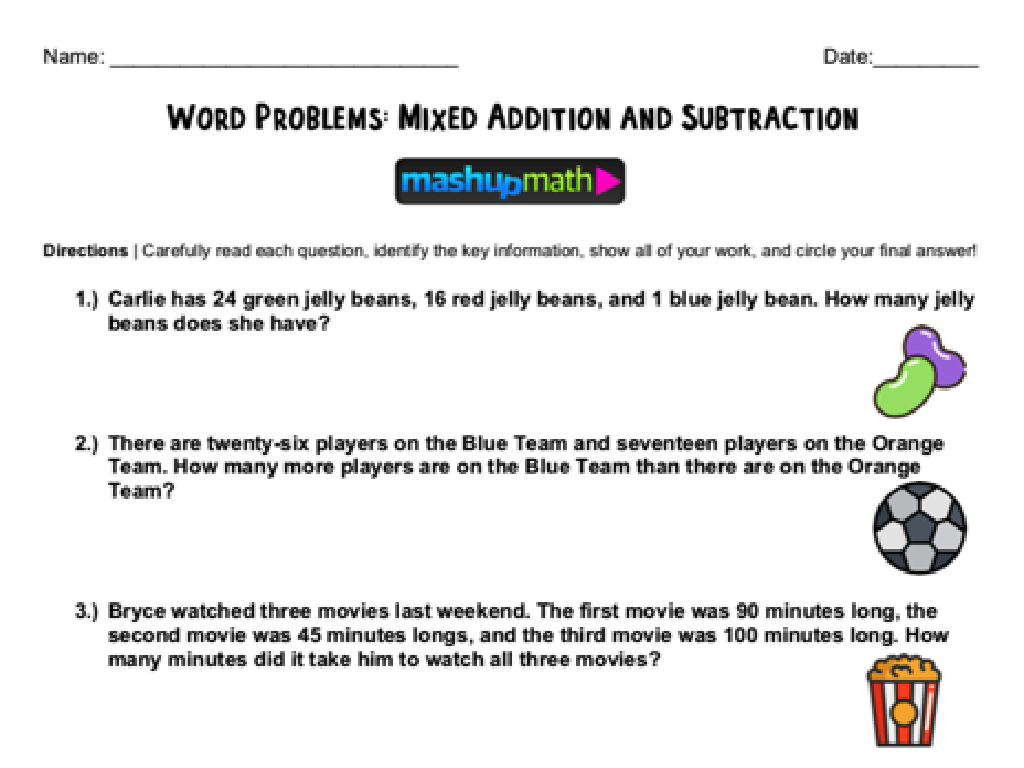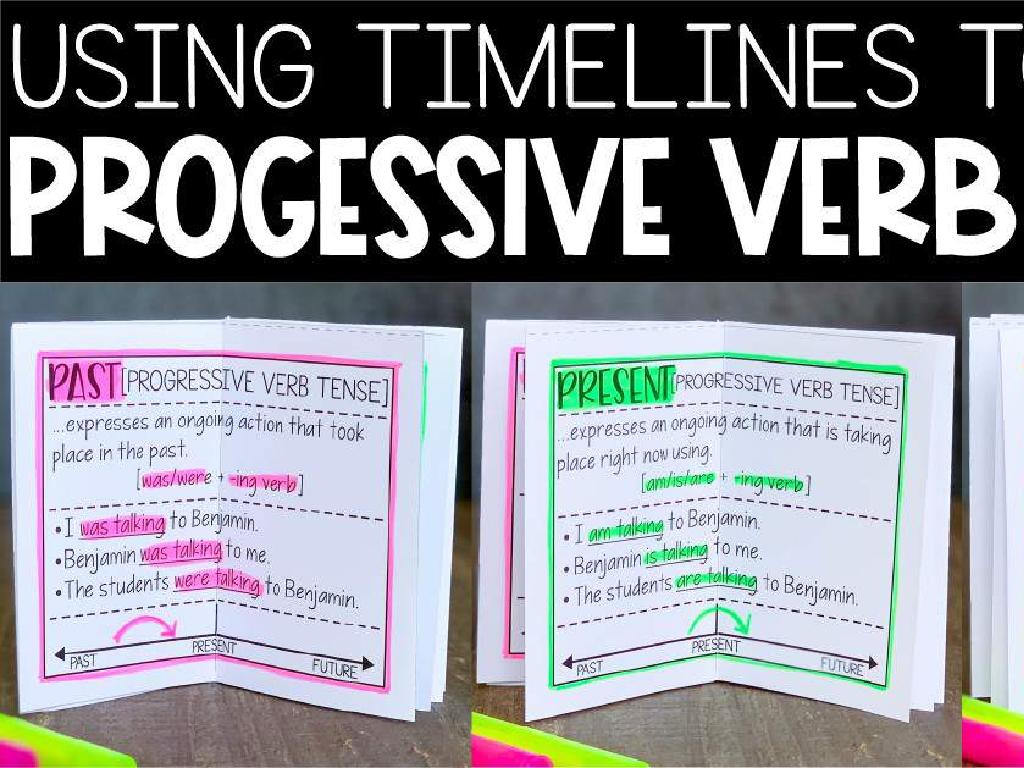Major U.S. Cities
Subject: Social studies
Grade: Third grade
Topic: Geography
Please LOG IN to download the presentation. Access is available to registered users only.
View More Content
Exploring Major U.S. Cities
– Cities as part of geography
– Cities are places where lots of people live and work together.
– Importance of cities
– Cities are centers for culture, business, and community life.
– Examples of major cities
– New York, Los Angeles, Chicago: each has its own story!
– Activities: City discovery
– Draw your favorite city or create a city skyline collage.
|
This slide introduces students to the concept of cities within the context of U.S. geography. Emphasize that cities are significant because they are hubs of activity where many people live close together and where many important activities like business, government, and cultural events take place. Provide examples of major U.S. cities and highlight their unique characteristics. For the activity, encourage students to express their understanding and creativity by drawing or crafting. This will help them remember the cities better and understand their importance in the country’s geography and culture.
Exploring Cities: What is a City?
– Definition of a city
– A city is a large, populated area with many buildings and streets.
– City vs. Town vs. Village
– Cities are larger than towns and villages and have more services.
– Characteristics of a city
– Cities have lots of people, tall buildings, and various services like schools and hospitals.
– Examples of major U.S. cities
– New York City, Los Angeles, Chicago are examples of major U.S. cities.
|
This slide introduces students to the concept of a city and how it differs from towns and villages. Begin by defining a city and discussing its key characteristics such as population density, infrastructure, and availability of services. Compare and contrast these with smaller communities like towns and villages to highlight the differences. Use visual aids or a map to point out examples of major U.S. cities and their features. Encourage students to think about any cities they’ve visited or heard about and what makes them unique. This will help students grasp the concept of urban areas and their importance in geography and society.
Major U.S. Cities – East Coast
– New York City: The Big Apple
– Known for its skyscrapers like the Empire State Building
– Washington D.C.: The Nation’s Capital
– Home to the President and the U.S. Capitol Building
– Miami: The Magic City
– Famous for its beaches and vibrant culture
|
This slide introduces students to three major cities on the East Coast of the United States, each with a unique nickname that captures its essence. New York City, often called ‘The Big Apple,’ is a bustling metropolis known for its iconic skyline and as a cultural melting pot. Washington D.C., the nation’s capital, is where the President lives and where important government decisions are made. Miami, known as ‘The Magic City,’ is celebrated for its beautiful beaches, diverse population, and rich cultural influences. Encourage students to share what they know about these cities and discuss the significance of each city’s nickname. This will help them connect more personally with the geography and culture of these important U.S. locations.
Exploring Major Midwest U.S. Cities
– Chicago: The Windy City
– Known for its skyscrapers and deep-dish pizza
– Detroit: Motor City
– Famous for its automotive history
– Minneapolis: City of Lakes
– Has many beautiful lakes and parks
|
This slide introduces students to three major cities in the Midwest region of the United States, each with a unique nickname and identity. Chicago is called ‘The Windy City,’ not just for its weather, but also for its vibrant history and culture. Detroit is known as ‘Motor City’ due to its rich automotive industry legacy. Minneapolis, with its numerous lakes and green spaces, is aptly named ‘City of Lakes.’ Encourage students to think about what makes these cities special and how their nicknames relate to their history and geography. Discuss the importance of these cities in the context of American culture and industry.
Exploring West Coast Cities
– Los Angeles: City of Angels
– Known for Hollywood and beaches
– San Francisco: The Golden City
– Famous for the Golden Gate Bridge
– Seattle: The Emerald City
– Renowned for its lush green spaces
|
This slide introduces students to three major cities on the United States West Coast, each with a unique nickname that reflects its culture and characteristics. Los Angeles is often called the ‘City of Angels,’ a bustling metropolis known for its entertainment industry and sunny beaches. San Francisco, ‘The Golden City,’ is iconic for its historic Golden Gate Bridge and picturesque bay. Seattle, ‘The Emerald City,’ is celebrated for its abundant greenery and environmental consciousness. Encourage students to discuss what makes each city special and how their nicknames might relate to their landmarks and culture. This can be a starting point for a project where students create posters or brochures about each city.
Map Activity: Find the Cities
– Locate learned cities on a map
– Mark cities with your markers
– New York, Washington D.C., Miami, Chicago, Detroit, Minneapolis, Los Angeles, San Francisco, Seattle
– Discuss cities’ locations with a partner
– Think about why cities are where they are
– Consider factors like geography, economy, history
|
This activity is designed to help students apply their knowledge of major U.S. cities in a practical exercise. Provide each student with a map of the United States and markers. Students should mark the locations of New York, Washington D.C., Miami, Chicago, Detroit, Minneapolis, Los Angeles, San Francisco, and Seattle. Encourage them to discuss with a partner why each city might be located in its particular place, considering geographical advantages, historical significance, economic factors, and more. This will help them understand the importance of location in the development of cities. Possible activities include pairing students to compare their maps, having a class discussion on the importance of each city, or even creating a gallery walk of their maps around the classroom.
Why Cities Matter: The Heart of America
– Cities drive business and economy
– They’re places where businesses grow, providing jobs and services.
– Cities are hubs for transport and trade
– Roads, rails, and airports connect cities, moving goods and people.
– Cities, a blend of cultures and diversity
– Cities are home to people from many backgrounds, sharing traditions.
|
This slide aims to explain the significance of cities in the United States. Cities are the engines of the economy, providing opportunities for business and employment. They serve as major centers for transportation, with extensive networks that facilitate the movement of goods and people across the country and beyond. Additionally, cities are celebrated for their cultural diversity, with people from various ethnicities and backgrounds coming together, enriching the community with a variety of traditions, languages, and cuisines. Encourage students to think about their own experiences in cities or what they might expect to see and learn from visiting a city. Discuss how this diversity makes cities vibrant and dynamic places to live and visit.
Class Activity: Create Your City
– Become a city planner!
– Build a model city in groups
– Use craft materials for construction
– Include buildings, roads, parks
– Think about what makes a city functional and fun
– Present your city design
|
This activity allows students to apply their knowledge of geography and understanding of city elements by designing their own city. Divide the class into small groups and provide a variety of craft materials. Encourage creativity and teamwork as they decide on the layout and features of their city. Remind them to include essential elements like buildings for living and working, roads for transportation, and parks for recreation. After the construction, each group will present their model to the class, explaining the rationale behind their design choices. Possible variations of the activity could include focusing on environmental sustainability, historical accuracy, or futuristic technology.






